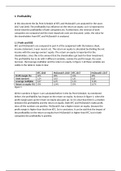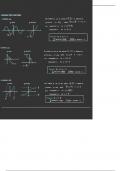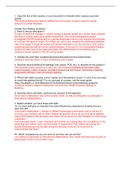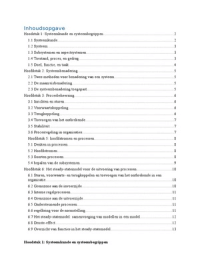In this document the Du Pont Schedule of KFC and Mcdonald’s are analyzed for the years
2017 and 2018. The profitability has influence on the return on equity, so it is important to
invest what the profitability of both companies are. Furthermore, the revenue of both
companies are compared and the most important costs are discussed. Lastly, the value for
the shareholders from KFC and McDonald’s is analyzed.
1.1 Profit and ROE
KFC and McDonald’s are compared in part A of the assignment with the balance sheet,
income statement, 5-year record, etc. The return on equity is calculated by dividing the net
income with the average owners’ equity. The return on equity is important for the
shareholders, since this is the amount that the shareholders get back for their investment.
The profitability has to do with 4 different variables, namely the profit margin, the asset
turnover, the leverage multiplier and the return on equity. In figure 1 all these variables are
visible in the table to make it clear.
KFC 2018 McDonald’s 2018 KFC 2017 McDonald’s 2017
Profit margin (%) 12% 28% 14% 30%
Asset turnover 1,24 0,63 1,61 0,65
Leverage multiplier 2,07 6,99 2,10 11,85
Return on equity (%) 30% 124% 39% 217%
Figure 1
All the numbers in figure 1 are calculated before in the Du Pont Schedule. As mentioned
before, the profitability has impact on the return on equity. As shown in figure 1, when the
profit margin goes up the return on equity also goes up. So it is clear that there is a relation
between the profitability and the return on equity. Both KFC and McDonald’s make profit,
since all the numbers are positive. McDonald’s has a higher return on equity, because the
profit margin is higher than that from KFC. So in conclusion, it can be said that the impact of
the profitability on the return on equity from McDonald’s is higher than KFC, but in both
companies the profitability is positive.











